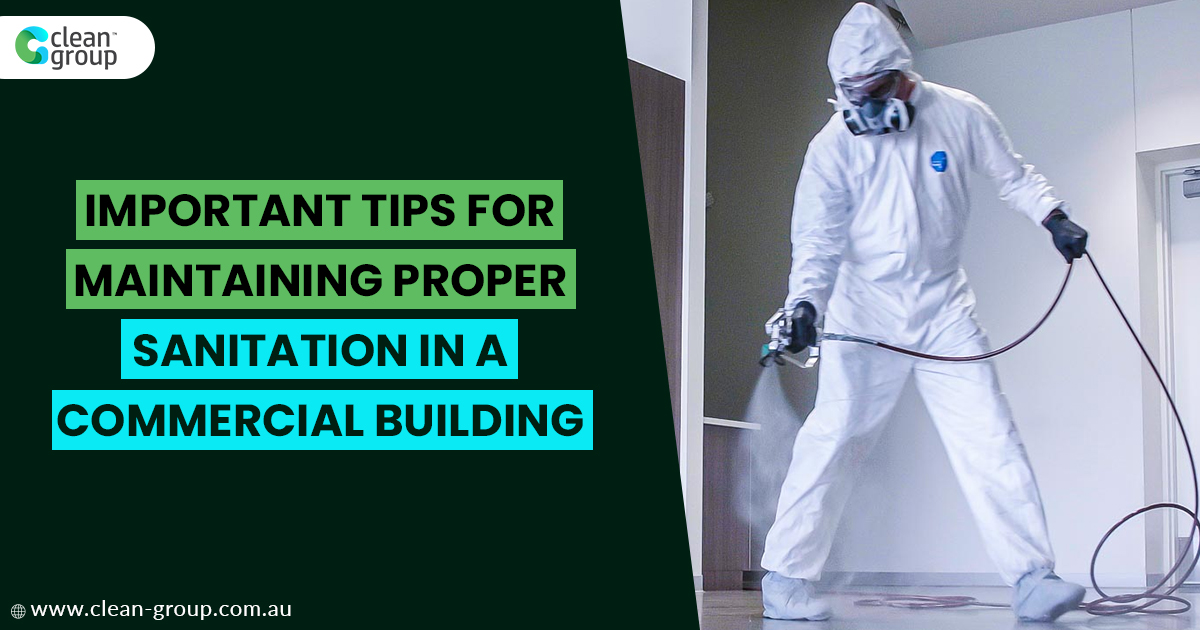Cleanliness is essential, a clean environment makes people positive and happy. Even if the first impression is kept aside, health is actually the main reason why it is so important to have a clean building. In a commercial building, cleanliness reflects the working environment and culture of the company. It also shows how much a company cares about its staff and customers.
Coronavirus or Covid-19 is making survival hard since December 2019, more than 4 million people have died so far from the coronavirus COVID-19 outbreak. This pandemic situation taught everyone a lesson that only cleaning is not enough, sanitizing and disinfecting have become necessary these days.
Know the Difference
Meanwhile, cleaning, sanitizing, and disinfecting are basically related to cleaning but they are different from each other.
Cleaning removes dust, debris, and dirt from the surface, and scrubbing, washing, and rinsing are the common tasks for cleaning. In this process hot water with detergent/soap/cleaning compound.
Sanitizing, on the other hand, reduces the germs and bacteria identified on the product’s label from the surfaces. In it, chemical-based products are used.
Disinfecting destroys or inactivates the bacteria, germs, and viruses identified on the product label on hard, non-porous surfaces. It is also performed using chemical-based products.
While disinfecting is the most reliable way to help reduce the risk of spreading germs from surfaces by touch. Sanitizing is the most common, economical, and popular way to keep people safe from all risks.
In this article, some of the best sanitizing practices have been provided to follow during this pandemic time to reduce the risks to a minimum level. Even if COVID-19 isn’t of immediate concern, these practices will keep staff, guests, and customers of commercial property protected. Including these hygiene protocols in daily cleaning, tasks will be a great step to keep occupants happier, healthier, and more productive.
Protect Your Organization from Covid-19 with Proper Sanitizing
There are many ways to uplift the hygiene standard at your commercial premises. Some of the key practices a cleaner, employer, or employee can include in your daily cleaning plan are listed below.
1. Follow Resources from Trusted Sources
Wrong information and bad guidance can be really dangerous in a health crisis. And during the pandemic period, can make things worse. Thus, for cleaners and employers, it is advised to always choose trusted organizations for details, updates, and instructions. Anyone who wants to stay up-to-date with the latest information on the latest health and safety precautions, make sure to visit the following links:
- The World Health Organization
- The U.S. Environmental Protection Agency
- The Centers for Disease Control and Prevention
2. Audit of High-Touch Surfaces
Commercial properties have many high-touch surfaces that can harbour millions of bacteria. And since it’s a crowded space, these surfaces should be cleaned and sanitized regularly to encourage a healthy and productive workplace. With auditing and observing activities, employers or cleaners can easily find these high-touch surfaces in a building.
You can start with these surfaces: chairs, appliances, computer mice, coffee stations, desks, door handles, lift buttons, keyboards, diaper changing stations, kitchen surfaces, light switches, toilet, TV remote, railings, reception areas, sinks, tables, telephone, vinyl furniture, water cooler handle.
3. Regular Sanitizing of High-Touch Surfaces Is Vital
According to the Centers for Disease Control and Prevention (CDC), Cleaning and sanitizing are different and both have their own importance. While the cleaning solution removes the dirt, dust, and grime from the surface, sanitizing reduces germs and bacteria from the surface.
To properly clean contaminated surfaces in a commercial building, cleaners working there can use a combination of cleaning and sanitizing products, or use a cleaning solution that is a sanitiser too.
4. Encourage Proper Hand Wash and Sanitation
It has been observed that proper handwashing is one of the best defences against the spread of Coronavirus. If people at your premises don’t follow a proper handwashing technique, the situation can become worse and it will be dangerous for other employees, visitors, and occupants. Employers should provide training to employees to wash their hands.
Hanging posters displaying proper hand-washing techniques in restrooms, kitchens and other high-traffic areas is also a good step. Additionally, employers can also provide hand sanitiser that contains at least 60% alcohol to employees. This will be a time-saving and highly effective way to prevent more pathogens from entering your building.
5. Handle Cleaning Equipment with Proper Sanitary
It is important to use fresh, clean sanitary supplies in your building to prevent cross-contamination and protect the health of the occupant. Normally, good professional companies use microfiber cleaning cloths to sanitize all their equipment from time to time.
They also use microfiber cleaning cloths in a variety of colours for specific tasks and equipment and keep them separate too. Mops, cleaning cloths, and brushes should be washed after each use, and for better results and safety, a spray-and-vac system can be also used, which delivers a fresh cleaning solution for every application.
6. Maintain a Cleaning Checklist
Organizations must rely on a robust cleaning program that includes written procedures and tasks when cleaning and sanitizing their buildings. A robust custodial cleaning plan should mention which surfaces need to be cleaned, who will clean them, what products should be used, and the process to clean the area to prevent cross-contamination.
Before finalizing a deal with a commercial cleaning company, business houses should ask for the checklist, choose a schedule, check all the tasks included in the service, and details of the product and instrument.
7. Create an Outbreak Preparedness Process
Organizations and business houses need to be prepared for future opportunities as well as worst-case scenarios. Outbreak preparedness procedures are critical, especially when an outbreak can negatively affect staff, operations, and occupants. The plan should specify any additional cleaning measures that must be taken during the crisis, as well as how to identify signs and symptoms of outbreak infection.
Why Professional Cleaners?
Professional Cleaners or cleaning companies with their experience know the art of cleaning and sanitation very well. They prepare a proper COVID cleaning checklist after the initial inspection and on the basis of the client’s requirements.
Professional cleaners feature all the equipment and tools along with quality and government-approved cleaning products. And with their knowledge and experience, they can provide the best possible cleaning and a virus-free environment for workers, visitors, and all the operations.
To know more about sanitation in a commercial building, cost, process, and product feel free to contact Clean Group Sydney.

